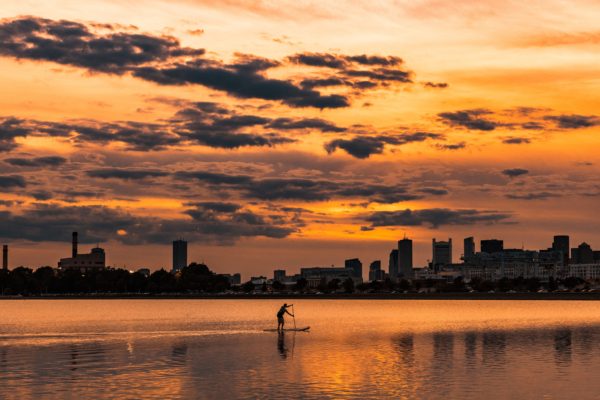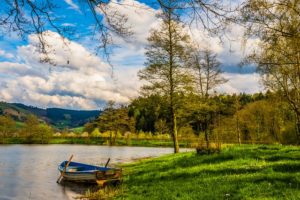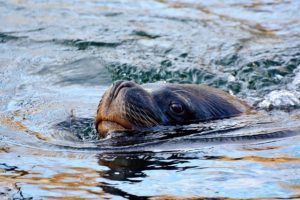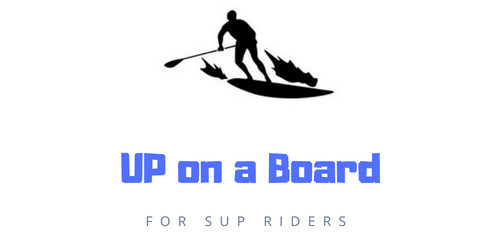Taking Photos on a Paddle Board

One of the best things about riding SUP is the amazing surroundings when on the water. Whether you’re on a remote lake, river, or the ocean there are breathtaking images all around. There are numerous opportunities to view various wildlife when near the water. Digitally capturing these moments can be very rewarding.
Can I take pictures on my paddle board? Most definitely, but consider these quick tips:
- Use a Chair
- Wait Until you Stop
- Shallow Waters
- Keep it Secure
- Take as Little as Possible
- Waterproof Camera
Remember You’re on a Paddle Board
Taking photos from your SUP is definitely for the more experienced paddle boarder. Even then it can be easy to lose your balance and topple into the water. There are a few things that I would recommend if you intend to take pictures from your paddle board.
Use a Chair: It’s going to be a lot more stable taking photos sitting down, than standing up on your board. Take a look at my post, Can I sit on a paddle board, that provides some great chair options.
If you intend to utilize a tripod you’ll want to do so while seated. The last thing you want is to take a tumble with expensive camera equipment in the water.
Wait until you Stop: Taking a pit stop on a remote shoreline can also be a great option for some amazing shots. Keep your equipment packed away until you reach your destination and then set up shop.
Shallow Waters: If for whatever reason you were to drop a camera or equipment into the water, you don’t want to have to go deep sea diving to try to find it or worse yet it’s just gone.
Taking some of your shots in shallow waters can provide you with some comfort that if it were to fall you could retrieve it.
Keep it Secure: Use a storage container or something that is secured to your paddle board. You can utilize the bungee poach on your paddle board as well.
You may want to find a strap for your camera that can keep it more attached to your body.
Take as little as Possible: You’re not going to want to bring a bunch of high-end lighting equipment or apparatuses on your SUP. Just bring the essentials like a camera and tripod.
A paddle board gives you some room for storage, but it’s not like being on land.
Waterproof Camera: I highly recommend using a waterproof camera, you’re on the water so it’s bound to get wet. Trying to use your IPhone could be a recipe for disaster.
There are many great waterproof cameras for both the experienced and inexperienced photographer. The below camera option is one of the best waterproof options that includes a package of everything you need.
This package comes with everything you need to take high-quality pictures both in and out of the water. The Nikon W300 is very simple to use and has amazing quality for this type of camera. I really like the floating buoy to utilize with SUP. This camera utilizes Snapbridge technology which makes sharing images online a breeze.
Some of the features include:
- Waterproof, freezeproof, shockproof and dustproof
- 4K Ultra HD video, 16MP photos
- Shockproof up to 8 feet and freezeproof down to 14 degrees Fahrenheit
- Built-in Wi-Fi and Bluetooth Low Energy for file transfers
- 1/1500-1 shutter speed and 125-6400 ISO
- 16.76-megapixel 1/2.3-inch CMOS sensor
- 4K or 1080p full HD videos with stereo sound using vibration reduction
- eCompass and altimeter
- GPS for geo-tagging
- 5x optical zoom and 4x digital zoom
Basic Tips for a High-Quality Photo

Being outdoors and on the water can present some different challenges with getting a great photo. There are some things to consider that will help you get the best shot while on your paddleboard. Here are a couple of basic tips:
- Make an effort to keep your horizon level
- Stay on calm waters or ensure that you’re able to steady your paddleboard before you take pictures
- Make sure you have your camera strap around your neck and equipment is secure
- Protect the front of your lens from any water that may spray on it or salt spray. You can use a UP or polarizing filter
- Utilize waterproof storage containers that float for storage
- Select a camera that has a wide-angle-telephoto zoom lens with vibration reduction
- Ensure that your lens aperture, and ISO speed so that your minimum shutter speed is 1\60 of a second or faster
- Carry a tripod with you that you can use either onshore or on your SUP
Getting a Good Shot
Try to find what ISO values work well for some of your shots. If you like more of a grainy shot then you can use a higher ISO speed.
Practice by taking several shots of different things when you get out on the water while playing with some of the camera features. Ensure that the lighting is adequate on the photos.

White balance is an important thing to understand when first starting out with photography. This relates to the color of light in your pictures.
The temperature that light illuminates, can affect the way a photo appears. An incandescent light can make a picture have a more yellowed look, while a fluorescent light appears bluer.
Using the proper white setting will help your pictures have that natural outdoor look.
Test things like scale, expression, and perspective. Use creativity with the composition of your photographs to make common things look extraordinary.
Tips for more creative photos
- The Rule of Thirds- Creating a tic-tac-toe imaginary grid to help align and balance the photo.
- Leading Lines- Something that helps your eyes go to a focal point, through natural lines.
- Repeating Patterns
- Light and Shadow
- Reflections
- Textures, Shapes, and Colors
- An added Human or Wildlife Element
Don’t’ forget that you can utilize both horizontal and vertical positions with your camera. Utilize the zoom features to scale out for more of a landscape shot or zoom in to get more detail oriented pictures of objects.
Taking several photos at once will allow you the opportunity to select that one great picture.
Guidelines for Wildlife on a Paddle Board

There are some things to remember when viewing wildlife for a paddle board. Here are some general guidelines to follow when viewing wildlife from a SUP:
- Leave things in its place
- Maintain an appropriate distance from wildlife. Maintain about 75 feet for birds/animals, 300 feet for more aggressive animals like bears etc.
- Avoid sneaking up from behind which may startle or cause the animal to react negatively
- Don’t swim with marine life, they are wild and can potentially bite or harm you
- Do not disturb nesting sites, birds will warn you of where they’re nesting
- Binoculars are a great way to view wildlife from a distance
- Leave abandoned animals alone
- Avoid using bird calls in the spring, which may be potentially harmful if a bird is drawn from its nesting site
To summarize, taking photos on a paddleboard can provide a rewarding experience. Enjoying nature and our surroundings is one major reason that we love being out on the water on our SUP. Taking photos is one more way to enhance our SUP ride.
Please comment below on anything that you enjoyed from this post and your experiences with taking photos on your SUP.

